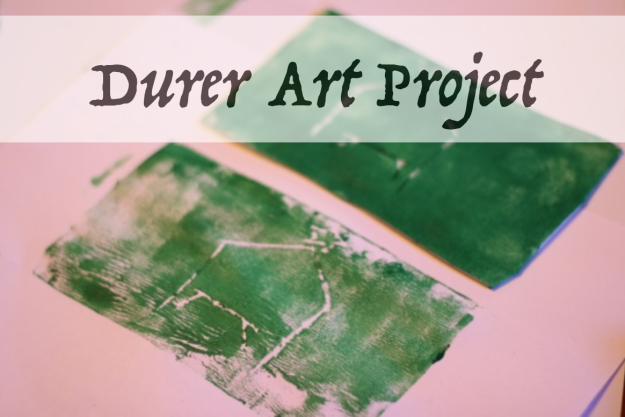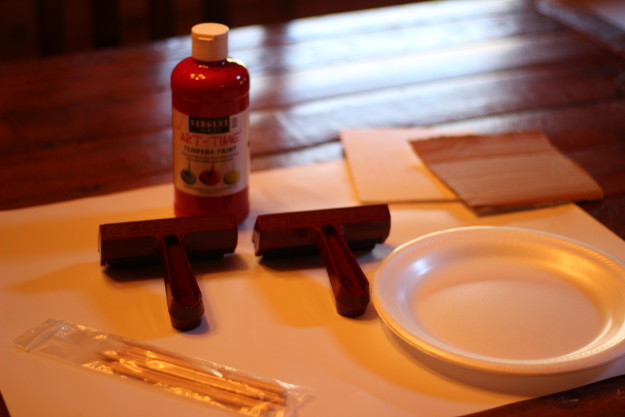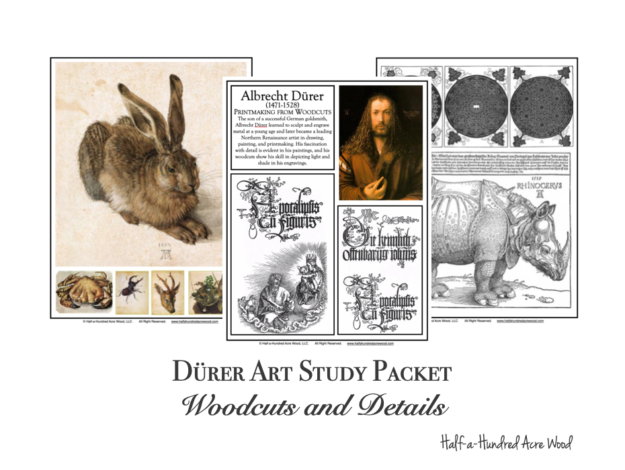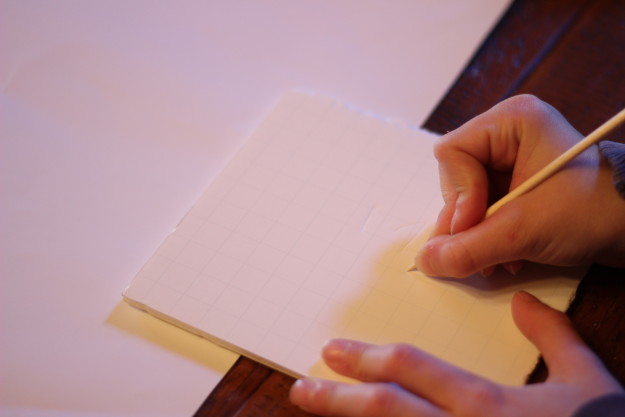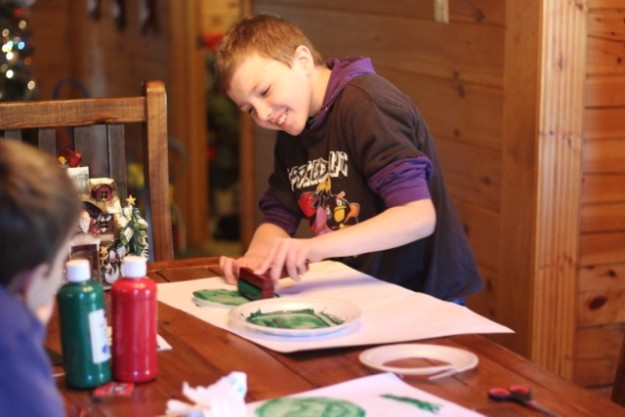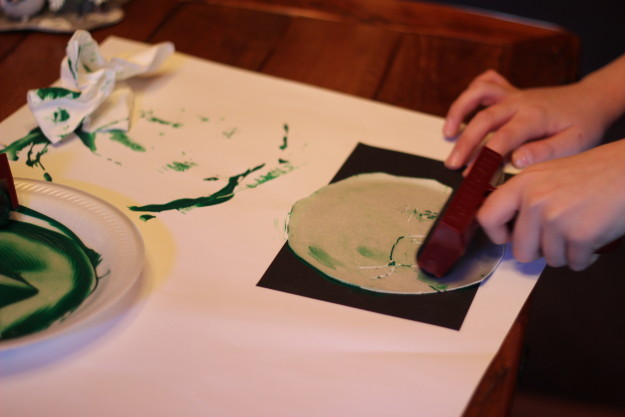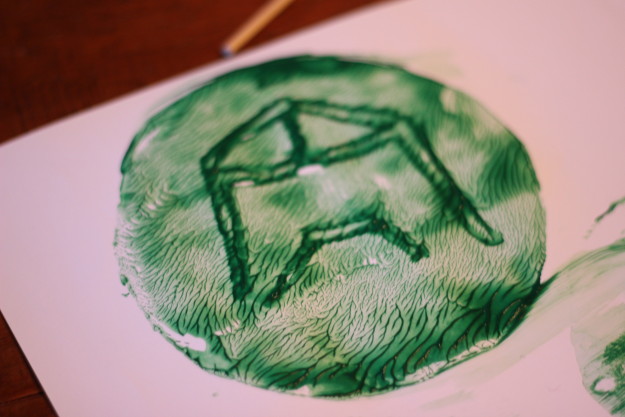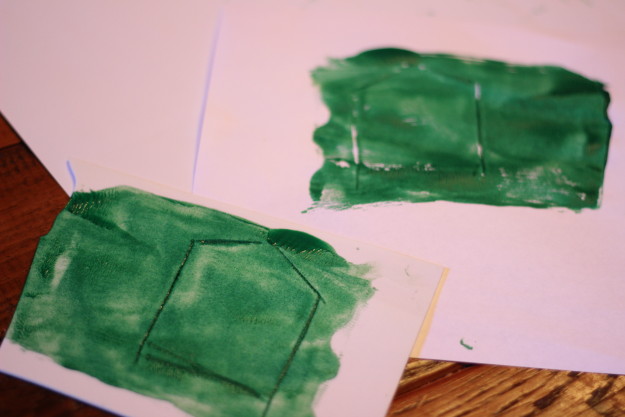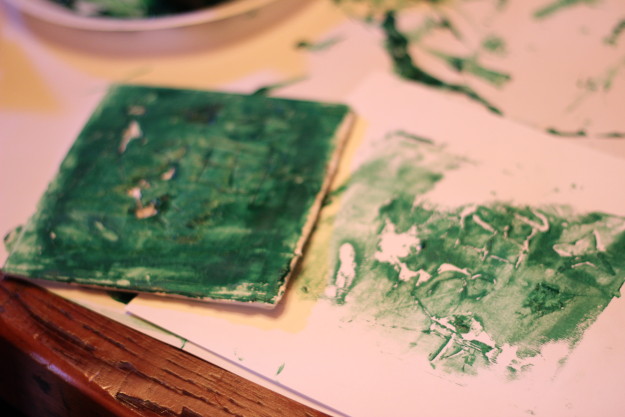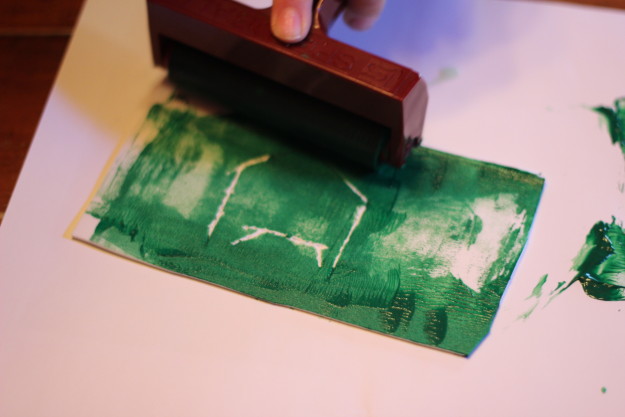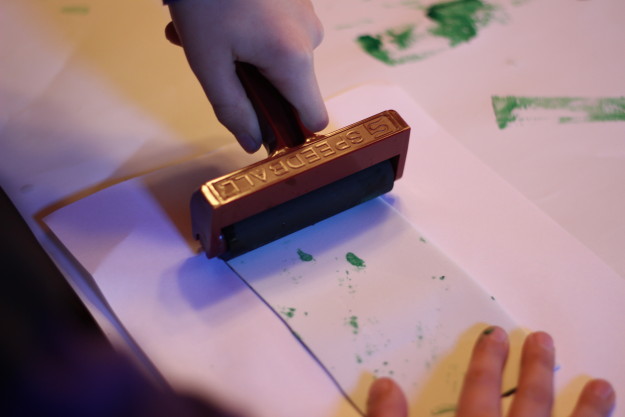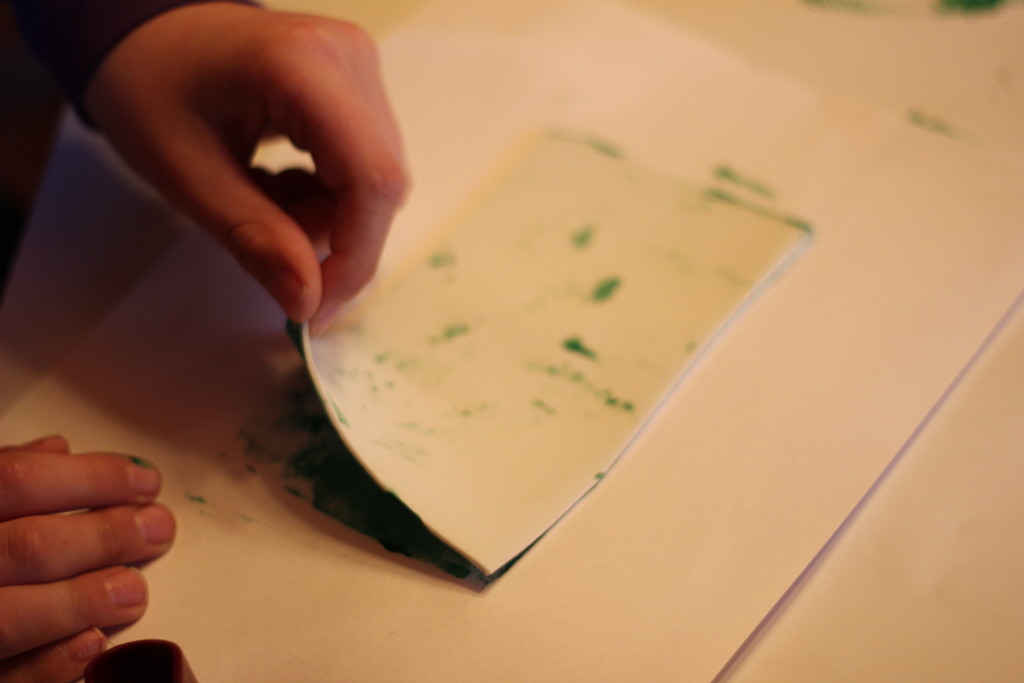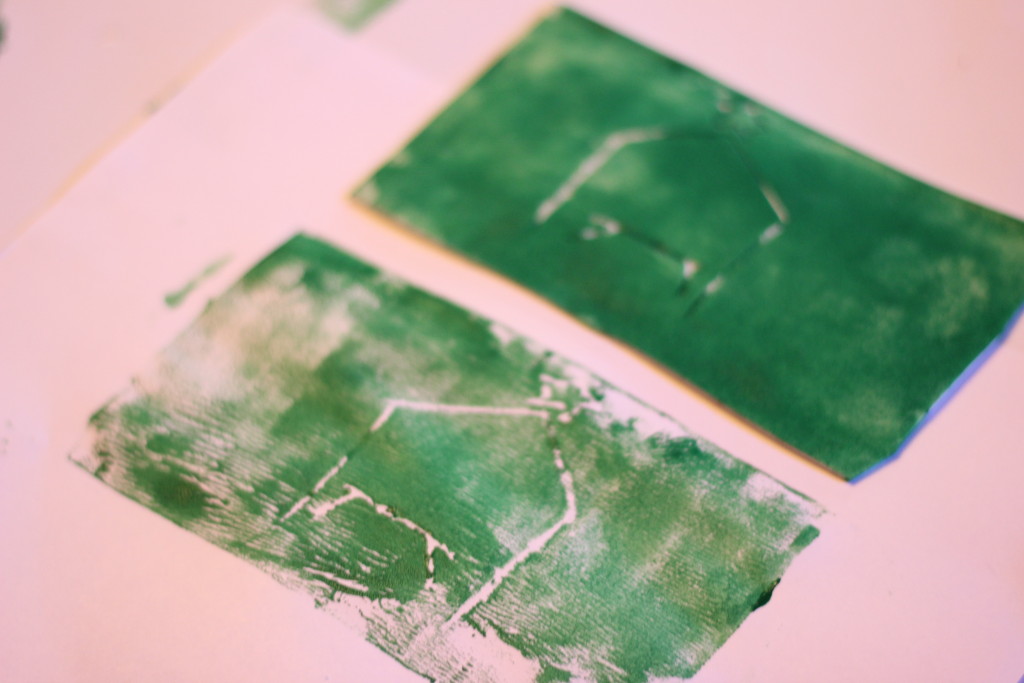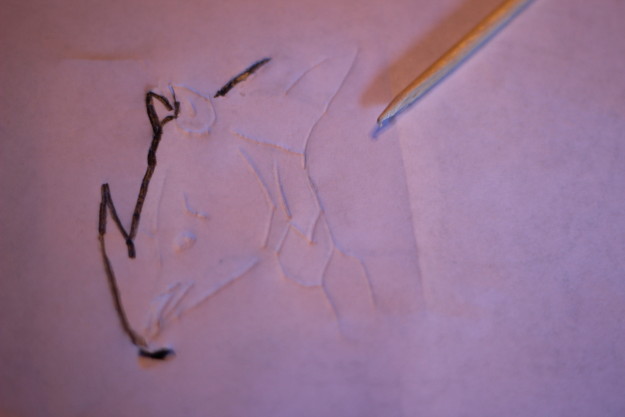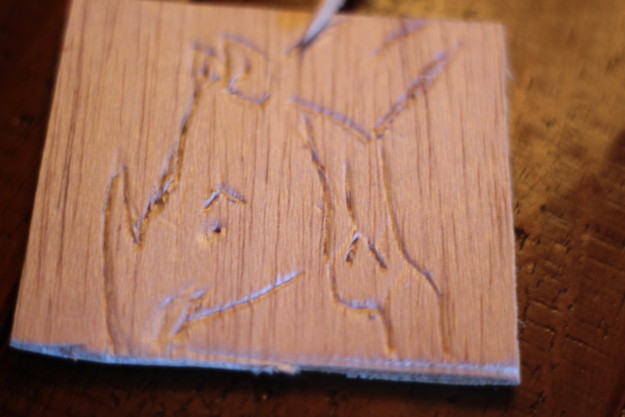Next up on our advent activity list this December was a Durer art project focusing on the art of printmaking. For this project, we decided to try out a variety of household items along with some craft & hobby supplies that we had on hand.
Materials for (Trial-and-Error) Durer Art Project:
- Durer Picture Study Pages (pictured below) from this Great Artists Picture Study Packet
- Two brayers (paint rollers)
- Skewer, stylus, pen, scratch stick, or pencil (or hardware such as screws, nuts, bolts and a hammer)
- Craft foam or scratch-foam board (or balsa wood if using hardware)*
- Tempera Paints (or block printing ink)**
- Paper or cardstock
- Cereal boxes (for paint rolling and containing printmaking mess)
*We also tried styrofoam plates and foam posterboard and attempted to use a stylus/skewer on balsa wood.
**Block printing ink will likely produce better results than tempera, but I had none on hand to try out.
And now for the procedure…
First, we studied the Durer Art Study Pages from the Great Artists Picture Study Packet. (Print out the Durer Art Study Pages and discuss with your student(s) to incorporate picture study and art appreciation.)
Step 1: Draw a design either on a piece of scratch paper or onto the foam printing plates. (Be sure to carve image deeply into printing plate.) If you are writing words, draw the design on paper first, flip the paper over, retrace your lines on the back side of the paper, lay the backwards drawing on top of the printing plate, and trace with a stylus. In printmaking, the image will print backwards from what you’ve carved.
Step 2: Roll brayer in paint or ink and roll paint/ink onto carved surface of foam board.
Step 3: Flip the painted surface onto a piece of paper or cardstock and use a second brayer to press paint onto paper surface.
Below are the results for a print using a styrofoam plate with tempera:
The glossy surface of the styrofoam caused the print to come out gloppy.
Below are the results for simple craft foam.
It turned out much better than a styrofoam plate, but because it is not very thick, the paint ended up filling some of the engraved areas.
Foam posterboard… didn’t work so well.
Stephen did a repeat of his manger scene with craft foam.
It turned out much better.
I decided to go back and attempt to engrave a Durer Rhinoceros on balsa wood. (You can download our Durer Rhinoceros template if you’d like to do this!)
No matter which tool I used, it kept having a tendency to go with the grain…
…and it was frustrating. Then… I forgot to roll the print on a flat surface.

Yeah. So much for testing this out. But this would have turned out much better had I not rolled the print while it was on top of corrugated cardboard (doh!). I’m not sure why I didn’t just try it again while I had the paints out. I guess I was over it already.
I’ve decided to nix the idea of having children carve an actual image into balsa wood. If we decide to use balsa wood for our block print, I will opt to go with the hardware + hammer technique to create a design (but not sure about little fingers and hammers – quite frankly, that kind of scares me). More than likely, we will use craft foam or foam printing plates to engrave a design. (The children’s ArtQuest area at the Frist Center for the Visual Arts in Nashville uses Scratch-Foam Board, which is a bit more expensive than foam printing plates.)
Simple and cost effective option for youngest children:
After doing some additional experimentation, I found that it was super easy to use plain craft foam (they come in packages of 32 at Wal-Mart) and a ball-point pen. If you brush the paint onto the image instead of using the brayer, it will make a very nice print!
Have you tried printmaking? Do you have any ideas or tips to share? Feel free to leave a comment!
For our other art project posts visit…
Giotto Art Project
Ghiberti Art Project
Angelico Art Project
Michelangelo Art Project
El Greco Art Project
Other Great Artist Projects
Other related posts:
Great Artist Coloring Pages
Fine Arts Notebooking Pages
Great Artists Study
Art Appreciation through Art History

